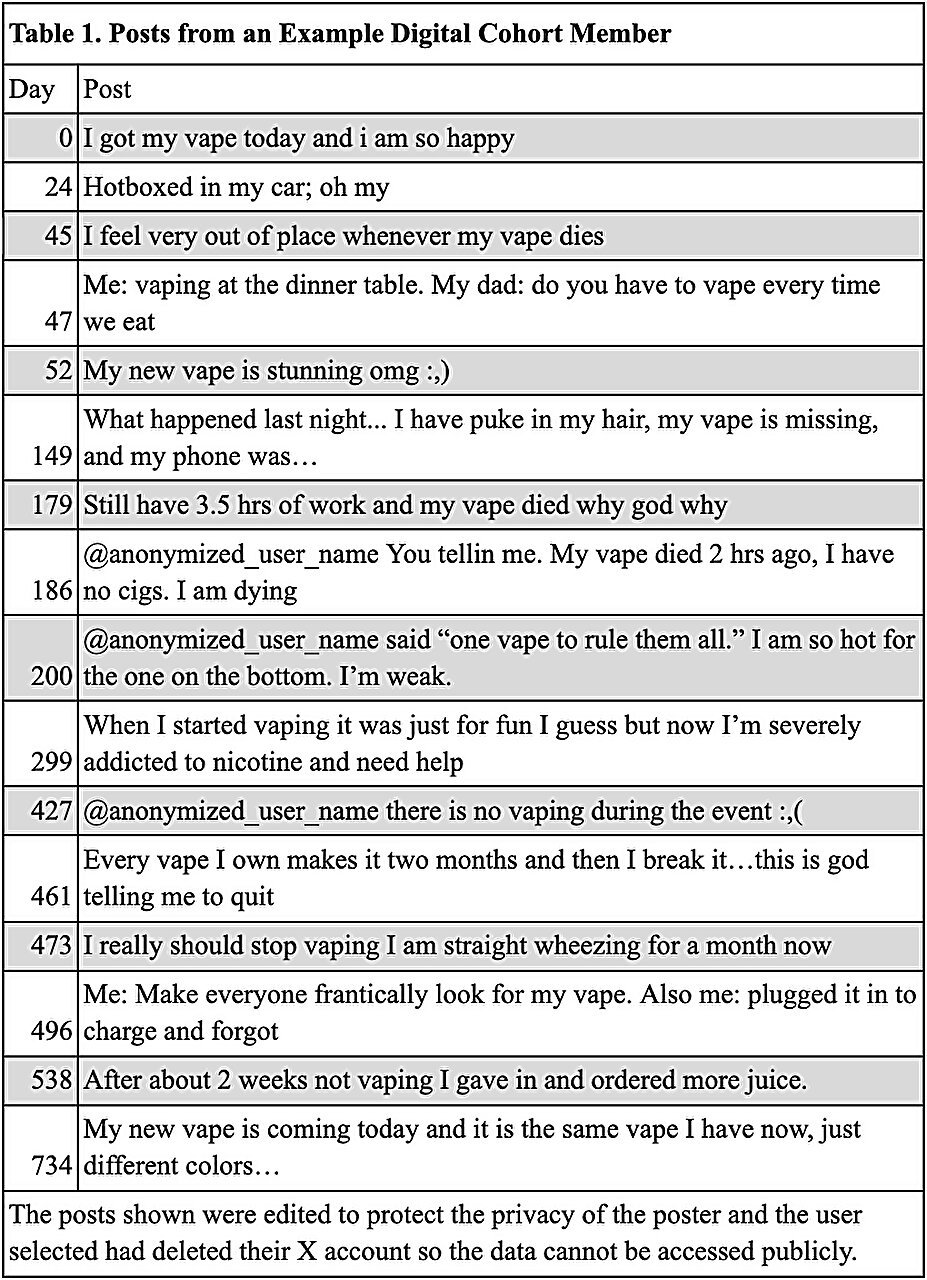Tapping into the vast amount of data now available on social media, a new study from scientists at the University of California San Diego introduces a powerful new approach to understanding the nation’s health, in this case the vaping epidemic.
The study, published in the American Journal of Preventive Medicine on June 19, was led by John W. Ayers, Ph.D., from the Qualcomm Institute within UC San Diego.
“Researchers studying social media have tended to analyze the frequency and content of posts,” said Ayers, who is deputy director of informatics at the Altman Clinical and Translational Research Institute, vice chief of innovation in the Division of Infectious Disease and Global Public Health at UC San Diego School of Medicine, in addition to Qualcomm Institute scientist.

“While this can highlight trends and patterns, a longitudinal study that follows a group of the same individuals over time—a cohort—is considered the gold standard of observational scientific evidence. We have introduced a way to create a ‘digital cohort’—a 21st century evolution of this important technique—to study e-cigarette vaping behavior, including how long it typically takes to show signs of addiction, experience adverse effects and try to quit.”
“Cohort studies have been the backbone of medical knowledge,” said Davey Smith, M.D., chief of the Division of Infectious Disease and Global Public Health and professor in the UC San Diego School of Medicine, co-director of the Altman Clinical and Translational Research Institute at UC San Diego, and study co-author. “Despite their value, cohort studies are incredibly resource-intensive and time-consuming to conduct. With our digital cohort approach, we can study populations at an unprecedented scale by leveraging the wealth of data people are organically sharing on social media platforms.”
In fact, Ayers notes, the current study could be considered the largest cohort study in medical history.
Applying the digital cohort method to vaping
As a case study for the new approach, the researchers used their digital cohort approach to study e-cigarette vaping behaviors. From over 19 million vaping-related tweets, they identified 25,112 X (formerly Twitter) accounts that mentioned vaping in at least 10 posts, creating a digital cohort with a combined 43.8 million person-days of observation.
Among the concepts revealed in following individual cohort members are vaping initiation; product hacking; signs of addiction; responses to peers who support or discourage vaping; adverse health effects from vaping; and cessation intentions, attempts, and resolutions.
To leverage this data for scientific insights, the research team analyzed an aggregated sample of data. Among randomly sampled accounts belonging to people who vaped, the researchers found that 27% reported making an attempt to quit during the study period. Of all first quit attempts, 26% were successful. Among those with a failed first attempt, 13% went on to make an additional quit attempt, with a 36% success rate. On average, people made their first quit attempt 531 days after their earliest vaping post. If that attempt failed, a second attempt typically came 361 days later.
“These findings give us a lens into the vaping cessation journey that has been difficult to obtain through traditional research methods,” added Ayers. “By tapping into the real words and experiences of people who vape, this approach can guide more timely and effective public health interventions.”
Building the next digital cohort
The vaping study represents just the first application of this digital cohort approach. The research team plans to rapidly expand by creating digital cohorts around other critical health issues in collaboration with decision makers.
“Given recent declines in life expectancy and general worsening of our population’s health, now is a critical time to increase the amount and timeliness of data guiding public health decision-making,” added Smith. “Our digital cohort method can help make medicine and public health more data-driven, responsive and, hopefully, more effective.”
The power of digital cohorts lies in their ability to rapidly study any health topic discussed on social media platforms.
“Digital cohorts can be applied to many diseases, conditions, behaviors or outcomes, if they are mentioned publicly online,” said Michael Hogarth, M.D., study co-author, professor in the Division of Biomedical Informatics and co-director of the Altman Clinical and Translational Research Institute at UC San Diego. “In the process, we are able to reflect patients’ lived experience.”
The team emphasized the democratizing potential of this approach. “Our current health care research priorities have been tied to legacy data collection processes that can take months, and sometimes years, to complete,” concluded Mark Dredze, Ph.D., the John C Malone Professor of Computer Science at Johns Hopkins University and study co-author. “Our approach presents an alternative in which scientists can apply proven epidemiological methods in this new digital realm. This allows us to rapidly identify and characterize emerging health issues in a data-informed manner.”
In addition to Ayers, Smith, Dredze and Hogarth, authors of the study include Adam Poliak, Ph.D., an assistant professor of computer science at Bryn Mawr College; Nikolas R. Beros, a student research intern at UC San Diego’s Qualcomm Institute; and Michael Paul, Ph.D., a consultant for the UC San Diego’s Qualcomm Institute.
More information:
“A Digital Cohort Approach for Social Media Monitoring: A Cohort Study of People Who Vape E-Cigarettes”, American Journal of Preventive Medicine (2024). DOI: 10.1016/j.amepre.2024.01.016
Citation:
Study uses powerful new ‘digital cohort’ method to understand vaping epidemic (2024, June 19)
retrieved 19 June 2024
from https://medicalxpress.com/news/2024-06-powerful-digital-cohort-method-vaping.html
This document is subject to copyright. Apart from any fair dealing for the purpose of private study or research, no
part may be reproduced without the written permission. The content is provided for information purposes only.










